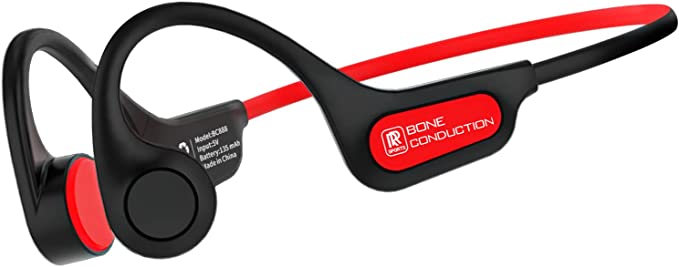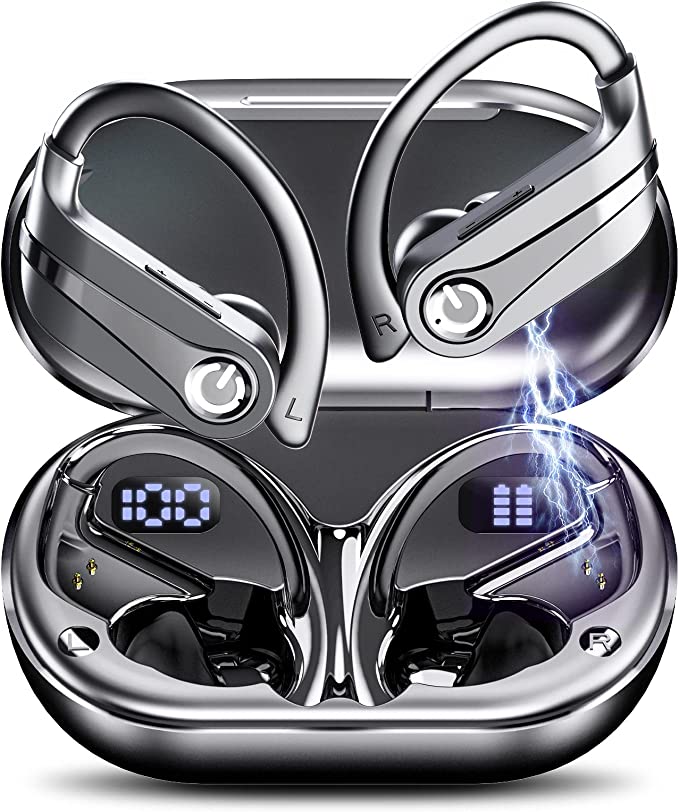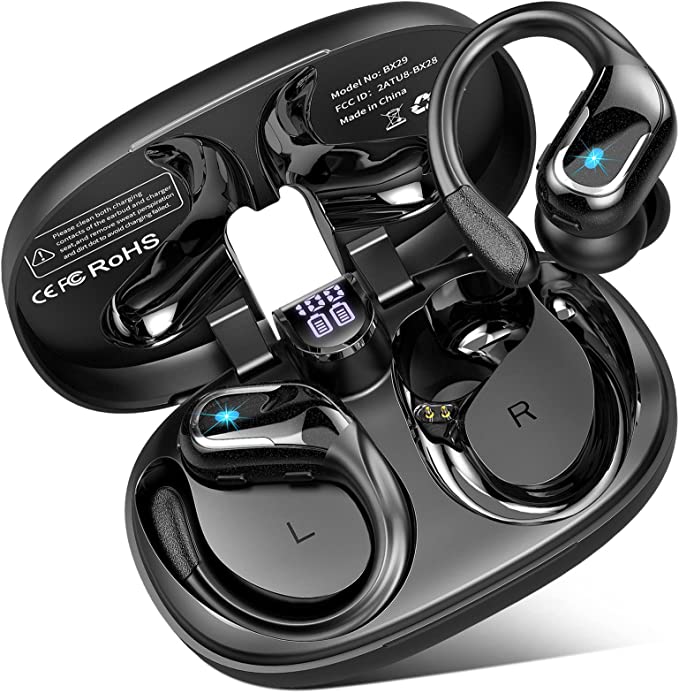Imagine this: you’re pounding the pavement on your morning run, lost in the rhythm of your favorite power anthem. Suddenly, a car horn blares – a near miss you almost didn’t hear because your ears were sealed off by traditional earbuds. Or picture yourself gliding through the cool water of a pool, lap after silent lap, wishing you could bring your energizing playlist beneath the surface, only to be met with the frustrating limitations of water and electronics.
This is the athlete’s audio paradox. We crave the motivation, the escape, the sheer joy that music brings to our workouts, yet the very tools designed to deliver it often compromise our awareness, become uncomfortable during exertion, or simply fail when faced with the elements, especially water. The quest for an audio solution that complements our movement, rather than clashing with it, has driven fascinating innovations. It’s a journey that takes us beyond simply shrinking speakers, leading us to explore entirely different ways of experiencing sound – ways that might even involve hearing through our very bones.

Whispers Through Your Bones: Unpacking the Magic of Bone Conduction
Most of us take hearing for granted, assuming it works in just one way. Sound waves travel through the air, funnel into our ear canal, vibrate the eardrum, pass through the tiny, intricate bones of the middle ear (the ossicles), and finally stimulate the fluid-filled cochlea in the inner ear. The cochlea, a marvel of biological engineering, converts these vibrations into electrical signals that our brain interprets as sound. This is air conduction, the pathway we rely on for almost everything we hear from the outside world.
But there’s another route, a less obvious yet equally fascinating one: bone conduction. Instead of sending sound waves down the ear canal, bone conduction technology uses small transducers that rest gently on the listener’s cheekbones, typically just in front of the ears. These transducers generate subtle vibrations. These vibrations don’t need the eardrum or middle ear; they travel directly through the bones of your skull – solid structures that are surprisingly efficient at transmitting vibrations – straight to the cochlea in the inner ear.
Think about how your own voice sounds different to you when you speak compared to hearing a recording of it. That internal resonance, that richness, is partly due to the vibrations travelling through your skull directly to your inner ear. Bone conduction headphones essentially harness this natural phenomenon. Products like the RR SPORTS BC888 Bone Conduction Headphones are built around this principle.
The most immediate and perhaps profound benefit of this approach is the open-ear design. Because nothing is physically blocking or inserted into your ear canals, they remain completely open to the environment. For a runner or cyclist, this is a game-changer for safety. You can enjoy your music or podcast while still clearly hearing traffic sounds, approaching pedestrians, bicycle bells, or even just the ambient sounds of nature. It’s about layering your personal soundtrack onto the world, not replacing the world with it.
Beyond safety, there’s comfort. Many people find in-ear earbuds irritating, especially during long periods of wear or intense activity where sweat can accumulate. Over-ear headphones can be bulky and hot. Bone conduction headphones, by avoiding the ear canal entirely, can offer a more comfortable, less intrusive fit for many users. They rest around the ear, not in or over it. This design philosophy prioritizes awareness and sustained comfort, key considerations for any piece of sports gear. It even addresses a subtle aspect of hearing health, by potentially reducing the direct sound pressure exerted on the eardrums compared to high-volume earbuds sealed in the canal.

Making Sound Watertight: The IPX8 Standard and the Physics of Submersion
Taking electronics near water, let alone into it, requires serious protection. This is where the Ingress Protection (IP) rating system comes in – an international standard (IEC 60529) that classifies the degree of protection provided by enclosures for electrical equipment against intrusion from foreign objects (like dust) and water.
The RR SPORTS BC888 boasts an IPX8 rating. Let’s break that down. The ‘X’ means the product hasn’t been specifically rated for dust ingress (which is common for devices primarily focused on water protection). The ‘8’ is the crucial part for water. It signifies the highest standard level for water immersion. Specifically, it means the device is protected against the effects of continuous immersion in water under conditions specified by the manufacturer, which must be more severe than the IPX7 requirement (immersion up to 1 meter for 30 minutes). For the BC888, the manufacturer specifies protection during total submersion in up to 2 meters of water.
Achieving this level of waterproofing isn’t trivial. It involves meticulous engineering – robust seals, water-resistant materials like the described ABS and silicone, and potentially advanced techniques like applying a unique nano-waterproof coating (as mentioned in the product description). Think of it like equipping the sensitive electronic components with their own tiny, high-performance wetsuit, designed to keep water out even under pressure during activities like swimming or surfing. This robust design ensures that neither sweat nor submersion will corrode the circuits or compromise functionality within the rated limits.
The Underwater Radio Silence: Why Bluetooth Takes a Dive
So, with an IPX8 rating, you might assume you can just pair your waterproof headphones to your phone by the poolside and dive in, streaming music wirelessly. Unfortunately, physics throws a wrench in those plans.
Bluetooth technology, like Wi-Fi and cellular signals, relies on radio waves to transmit data wirelessly through the air. Radio waves travel remarkably well through air, but water is a completely different story. Water is significantly denser than air and is very effective at absorbing and scattering radio waves, especially at the frequencies used by Bluetooth (around 2.4 GHz).
Imagine trying to shout instructions to someone through a thick concrete wall – your voice (the signal) gets muffled and absorbed, becoming unintelligible very quickly. Radio waves face a similar, albeit more extreme, challenge underwater. The signal strength drops off dramatically within just a few inches or centimeters.
This isn’t a flaw in Bluetooth technology itself, nor is it a shortcoming specific to the BC888 or any particular brand of waterproof headphones. It’s a fundamental constraint imposed by the laws of physics governing how electromagnetic waves propagate through different media. As the BC888’s own description rightly notes, “Bluetooth signal can not be transmitted underwater.” Trying to maintain a stable Bluetooth connection while swimming, even with your phone just a few feet away at the edge of the pool, is generally an exercise in frustration, leading to constant dropouts and interruptions.

The Onboard Lifeline: How MP3 Players Keep the Music Flowing Underwater
If wireless streaming is a no-go underwater, how can swimmers enjoy their carefully curated playlists? Engineers turned to a reliable, albeit more “old-school,” solution: local storage. By building a dedicated MP3 player directly into the headphones, the need for a continuous wireless connection is eliminated. The music resides on the device itself.
This is precisely the approach taken by the RR SPORTS BC888. It incorporates a built-in 16GB memory, which the manufacturer suggests can hold over 1000 songs (though this obviously depends heavily on the audio file format and quality). This onboard storage supports common audio formats like MP3 and FLAC, allowing users to load their favorite tracks directly onto the headset.
How does it work in practice? Users typically connect the headphones to a computer using the provided magnetic charging cable, which also functions as a data transfer cable. The headphones appear as a storage drive, allowing users to simply drag and drop their music files onto it. Once the music is loaded, the user needs to switch the headphones from Bluetooth mode to MP3 player mode. Based on user Q&A associated with the product, this often involves a specific button press sequence, such as a quick double-click of the power/multifunction button, usually confirmed by a voice prompt like “Music mode.”
This integrated MP3 player is the critical component that transforms the BC888 from merely water-resistant headphones into functional swimming headphones. It directly overcomes the physical barrier that prevents Bluetooth from working reliably underwater, ensuring a continuous, uninterrupted audio experience for swimmers, surfers, or anyone engaging in prolonged water activities.

Designed for Motion: More Than Just the Core Tech
While bone conduction and waterproof MP3 playback are the headline acts, especially for swimmers, a successful sports headphone needs to nail the fundamentals of fit, weight, control, and endurance. The RR SPORTS BC888 incorporates several design elements aimed at the active user.
Weighing in at a mere 0.98 ounces (28 grams), the lightweight construction is crucial. Heavy or bulky headphones can become a noticeable annoyance during repetitive motion or long workouts. The goal is to make the technology feel almost invisible, integrating seamlessly with the user’s movement.
A secure fit is equally vital. Headphones that shift, bounce, or fall off during activity are frustrating and distracting. The BC888 employs an “upgraded ergonomic design” featuring a wraparound style. The use of Memory Titanium in the frame (as mentioned in the description) is significant here. Titanium alloys are known for being strong, lightweight, and flexible, allowing the band to gently clamp onto the head for stability while retaining its shape over time. This design aims for compatibility, fitting comfortably alongside swimming caps, glasses, or cycling helmets without interference.
For use outside the water, Bluetooth 5.3 provides the expected wireless connectivity for pairing with smartphones or other devices. This allows for streaming music, listening to podcasts, or taking calls using the built-in microphone during activities like running, cycling, or gym workouts. The stated 7-8 hours of playback time on a single charge (achieved in under 2 hours, according to the specs) should be sufficient for most extended training sessions or daily commutes. Charging is handled via a magnetic cable, which offers the convenience of easy attachment and helps maintain the waterproof seal by eliminating a traditional USB port opening. However, like all proprietary magnetic chargers, it means keeping track of that specific cable is essential.
Finally, control matters, especially when hands might be sweaty or wet. The BC888 opts for physical button controls – typically a multifunction button for play/pause, power, and calls, flanked by volume up/down buttons. In active scenarios, the tactile feedback of physical buttons can often be more reliable and easier to operate accurately than touch-sensitive controls.

Hearing It All: Embracing Technology, Making Informed Choices
From the subtle vibrations travelling through your skull to deliver sound while leaving your ears open, to the robust IPX8 sealing that defies water, and the clever integration of an MP3 player to sidestep the physical limitations of Bluetooth underwater – technologies like those found in the RR SPORTS BC888 are fascinating examples of engineering meeting human needs.
Understanding the science behind these features empowers us beyond simply reading a spec sheet. Knowing why bone conduction allows for situational awareness helps us appreciate its value in busy environments. Understanding why Bluetooth fails underwater clarifies the necessity of the MP3 function for swimmers, setting realistic expectations. It transforms us from passive consumers into informed users who can select the technology that truly aligns with our activities and priorities.
The journey of audio technology continues, constantly seeking better ways to integrate sound into our lives, especially our active ones. Whether it’s enhancing safety, improving comfort, or breaking down barriers like water, the goal remains the same: to harmonize the digital world with the human experience, allowing us to hear our music, and our world, all at once.



